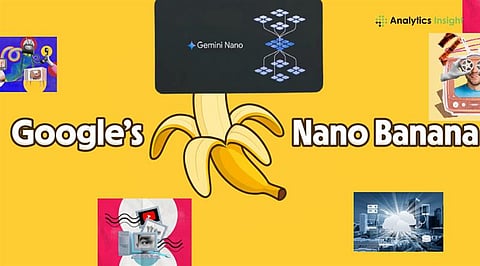

A new viral post from Pune has created strong interest in Google’s Nano Banana Pro. A techie from the city showed how the tool solved a handwritten maths problem in the same handwriting. The post sparked a heated debate online about the use of AI models in education.
The techie Siddhant Choudhary shared two images on X (Twitter). One image showed the handwritten maths question. The second image showed the answer created by Nano Banana Pro. The handwriting in both images looked almost the same. Choudhary said the model understood the question and solved it correctly. He also said the handwriting match surprised him. His post drew many likes, shares, and lengthy discussions in the comments.
Nano Banana Pro is part of Google’s Gemini 3 family. Google built this model for image-related workflows. The tool can read notes, sketches, and rough ideas. It can turn them into clean diagrams and neat visuals. It also uses strong reasoning to build complete solutions. Google says the model understands real-world context. This lets the tool produce accurate outputs from very little input.
The maths demo received mixed reactions. Many students felt excited. They said the tool can make challenging maths seem simple. Some said it can help them practise better because the answer looks like their own writing. Others felt worried. Teachers and parents said the feature can make cheating easy. Since the handwriting looks real, school checks may miss AI-generated homework.
Some users commented that the handwriting in the solution looked too perfect to be real. Choudhary replied that the answer came from the model. One comment said the feature will push students away from real learning. Another said such tools may start a new race for homework checks and strong proof of original work.
Choudhary said he used a feature called Flow from the Gemini Ultra plan. This detail shows that the tool supports advanced options in the paid tier. The post raised new questions around access, control, and the future of powerful AI tools.
Nano Banana Pro works in two steps. First, it reads the handwritten image, solves the problem with its reasoning, and then creates a new image that copies the user’s handwriting style. The model examines small writing details such as shape, pressure, spacing, and flow. This makes the final output look natural and personal and that lets it copy a handwriting style with high accuracy.
The tool brings clear benefits. Students can get clean and neat solutions that match their own writing. This may help them study better. It may also help them compare steps and understand where mistakes happen.
However, schools may struggle to judge real work. Common plagiarism tools cannot track handwriting matches. Teachers may need new methods to check assignments and tests. This viral moment shows how fast AI tools now shape daily life. Nano Banana Pro stands at the centre of a growing debate. The next steps will depend on how schools and tech makers set clear rules to guide fair use.
Also Read – Pro Tips to Use Google Gemini Nano Banana AI for Amazing Photo Edits
